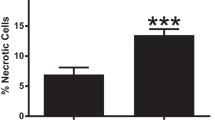Abstract
The adjuvant effect of icariin from Epimedium koreanum on the immune responses to bovine serum albumin (BSA) in mice was examined. Mice were immunized on days 1 and 22 intraperitoneally (i.p.) with one of the following: an emulsion form of BSA mixed with Incomplete Freund’s Adjuvant (BSA/IFA) or with Complete Freund’s Adjuvant (BSA/CFA) or BSA plus icariin mixed with IFA (BSA/Icariin/IFA). One week after the booster, polyclonal sera were collected from these animals to determine IgG isotypes specific for BSA in the sera and then spleens of these animals were harvested to evaluate IFN-γ and IL-4 produced in the splenocyte cultures. In order to determine the DTH (delayed type hypersensitivity) response, BSA was administered into the footpads of mice that were immunized as described above and the degree of footpad-swelling was measured. Data from these experiments showed that the icariin combined with BSA (BSA/Icariin/IFA) provoked the most abundant of IgG production in mice and enhanced the Th1-lineage development of IgG2a and IFN-γ productions (p < 0.05), whereas BSA/IFA resulted in a highest ratio of IgG1 to IgG2 and most dominant IL-4 production, indicating a Th2 response. This pattern of immunity was confirmed by the DTH determination revealing that icariin-containing formula caused the highest footpad-swelling followed by BSA/CFA and BSA/IFA, respectively. In addition, hemolytic assay showed that icariin at a dose of 1000 μg/mL caused no hemolysis when compared with a water-treated mouse. All of these data indicate that icariin has the immunoadjuvant effect which may enhance Th1-immune response, suggesting that icariin as an adjuvant would be beneficial in the treatment of Th1-disordered diseases.
Similar content being viewed by others
References
An, S. J., Li, T., and Li, E., Effect of kidney-tonifying herbs on ovary function and bone mass in postmentopausal women. Chinese J. Osteoporosis, 6, 55–59 (2000).
Bucy, R. P., Karr, L., Huang, G. Q., Li, J., Carter, D., Honjo, K., Lemons, J. A., Murphy, K. M., and Weaver, C. T., Single cell analysis of cytokine gene coexpression during CD4+ T-cell phenotype development. Proc. Natl. Acad. Sci. U. S. A., 92, 7565–7569 (1995).
Cribbs, D. H., Ghochikyan, A., Vasilevko, V., Tran, M., Petrushina, I., Sadzikava, N., Babikyan, D., Kesslak, P., Kieber-Emmons, T., and Cotman, C. W., Agadjanyan MG. Adjuvantdependent modulation of Th1 and Th2 responses to immunization with beta-amyloid. Int. Immunol., 15, 505–514 (2003).
Han, Y., Riesselman, M. H., and Cutler, J. E., Protection against candidiasis by an immunoglobulin G3 (IgG3) monoclonal antibody specific for the same mannotriose as an IgM protective antibody. Infect. Immun., 68, 1649–1654 (2000).
Han, Y., Rutin has therapeutic effect on septic arthritis caused by Candida albicans. Int. Immunopharmacol., 9, 207–211 (2009).
He, W., Sun, H., Yang, B., Zhang, D., and Kabelitz, D., Immunoregulatory effects of the herba Epimediia glycoside icariin. Arzneimittelforschung, 45, 910–913 (1995).
Herzyk, D. J., Gore, E. R., Polsky, R., Nadwodny, K. L., Maier, C. C., Liu, S., Hart, T. K., Harmsem, A. G., and Bugelski, P. J., Immunomodulatory effects of anti-CD4 antibody in host resistance against infections and tumors in human CD4 transgenic mice. Infect. Immun., 69, 1032–1043 (2001).
Kensil, C. R., Patel, U., Lennick, M., and Marciani, D., Separation and characterization of saponins with adjuvant activity from Quillaja saponaria Molina cortex. J. Immunol., 146, 431–437 (1991).
Lavigne, L. M., Schopf, L. R., Chung, C. L., Maylor, R., and Sypek, J. P., The role of recombinant murine IL-12 and INF-γ in the pathogenesis of murine systemic Candida albicans infection. J. Immunol., 160, 284–292 (1998).
Lee, J. H. and Han, Y., Ginsenoside Rg1 helps mice resist to disseminated candidiasis by Th1 type differentiation of CD4+ T cell. Int. Immunopharmacol., 6, 1424–1430 (2006).
Lee, J. H., Park, J. H., Kim, Y. S., and Han, Y., Chlorogenic acid, a polyphenolic compound, treat mice with septic arthritis caused by Candida albicans. Int. Immunopharmacol., 8, 1681–1685 (2008).
Liang, H. R., Vuorela, P., Vuorela, H., and Hiltunen, R., Isolation and immunomodulatory effect of flavonol glycosides from Epimedium hunanense. Planta Med., 63, 316–319 (1997).
Liu, M. H., Sun, J. S., Tsai, S. W., Sheu, S. Y., and Chen, M. H., Icariin protects murine chondrocytes from lipopolysaccharide-induced inflammatory responses and extracellular matrix degradation. Nutr. Res., 30, 57–65 (2010).
Meng, F. H., Li, Y. B., Xiong, Z. L., Jiang, Z. M., and Li, F. M., Osteoblastic proliferative activity of Epimedium brevicornum Maxim. Phytomedicine, 12, 189–193 (2005).
Nelson, H. D., Humphrey, L. L., Nygren, P., Teutsch, S. M., and Allan, J. D., Postmenopausal hormone replacement therapy: scientific review. J. Am. Med. Assoc., 288, 872–881 (2002).
Sun, J., Song, X., and Hu, S., Ginsenoside Rg1 and aluminum hydroxide synergically promote immune responses to ovalbumin in BALB/c mice. Clin. Vaccine Immunol., 15, 303–307 (2008).
Sze, S. C., Tong, Y., Ng, T. B., Cheng, C. L., and Cheung, H. P., Herba Epimedii: anti-oxidative properties and its medical implications. Molecules, 15, 7861–7870 (2010).
Tonnetti, L., Spaccapelo, R., Cenci, E., Mencacci, A., Puccetti, P., Coffman, R., Bistoni, F., and Romani, L., Interleukin-4 and −10 exacerbate candidiasis in mice. Eur. J. Immunol., 25, 1559–1565 (1995).
Wu, H., Lien, E. J., and Lien, L. L., Chemical and pharmacological investigations of Epimedium species: a survey. Prog. Drug Res., 60, 51–57 (2003).
Yip, H. C., Karulin, A. Y., Tary-Lehmann, M., Hesse, M. D., Radeke, H., Heeger, P. S., Trezza, R. P., Heinzel, F. P., Forsthuber, T., and Lehmann, P. V., Adjuvant-guided type-1 and type-2 immunity: infectious/noninfectious dichotomy defines the class of response. J. Immunol., 162, 3942–3949 (1999).
Zhang, D. W., Cheng, Y., Wang, N. L., Zhang, J. C., Yang, M. S., and Yao, X. S., Effects of total flavonoids and flavonol glycosides from Epimedium koreanum Nakai on the proliferation and differentiation of primary osteoblasts. Phytomedicine, 15, 55–61 (2008).
Author information
Authors and Affiliations
Corresponding author
Rights and permissions
About this article
Cite this article
Rhew, K.Y., Han, Y. Immunoadjuvant activity of icariin that induces Th1-type antibody in mice. Arch. Pharm. Res. 35, 1685–1691 (2012). https://doi.org/10.1007/s12272-012-0920-2
Received:
Revised:
Accepted:
Published:
Issue Date:
DOI: https://doi.org/10.1007/s12272-012-0920-2




